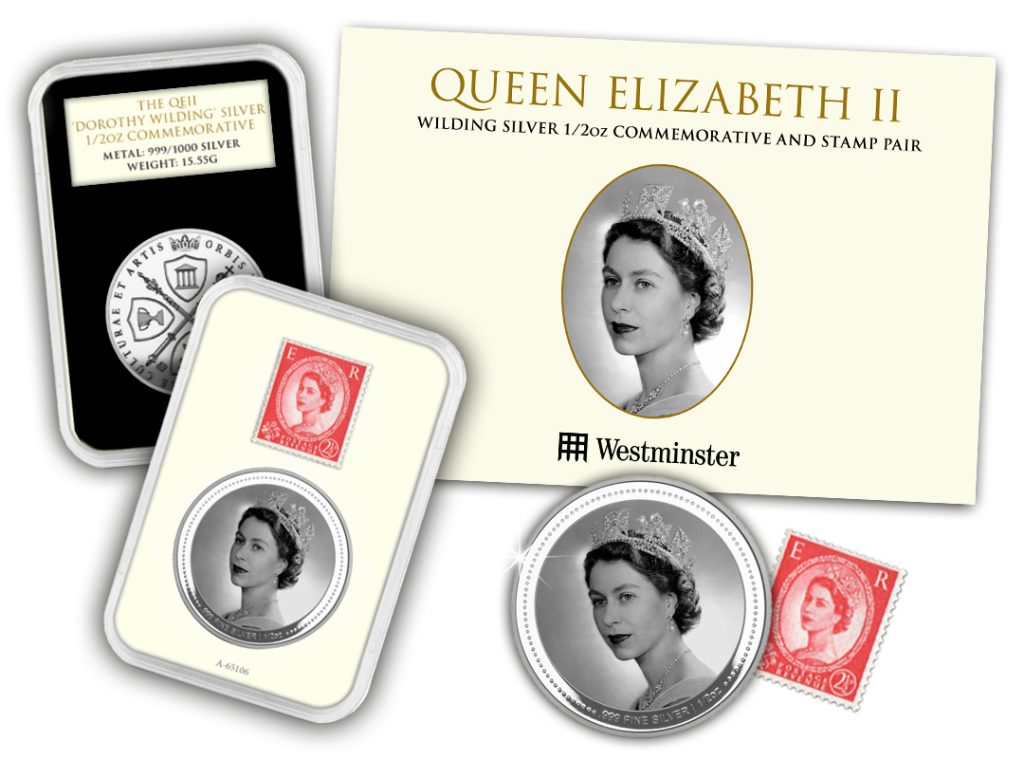Her Majesty the Queen
Discover the 2025 Annual Sets
As we welcome 2025, there’s no better way to mark the occasion than with The official brand new 2025 Annual Sets — a stunning collection of coins celebrating the people, places, and events that have shaped British history. Each coin captures a defining moment, bringing history to life in a way that feels more meaningful than ever at this time of year.
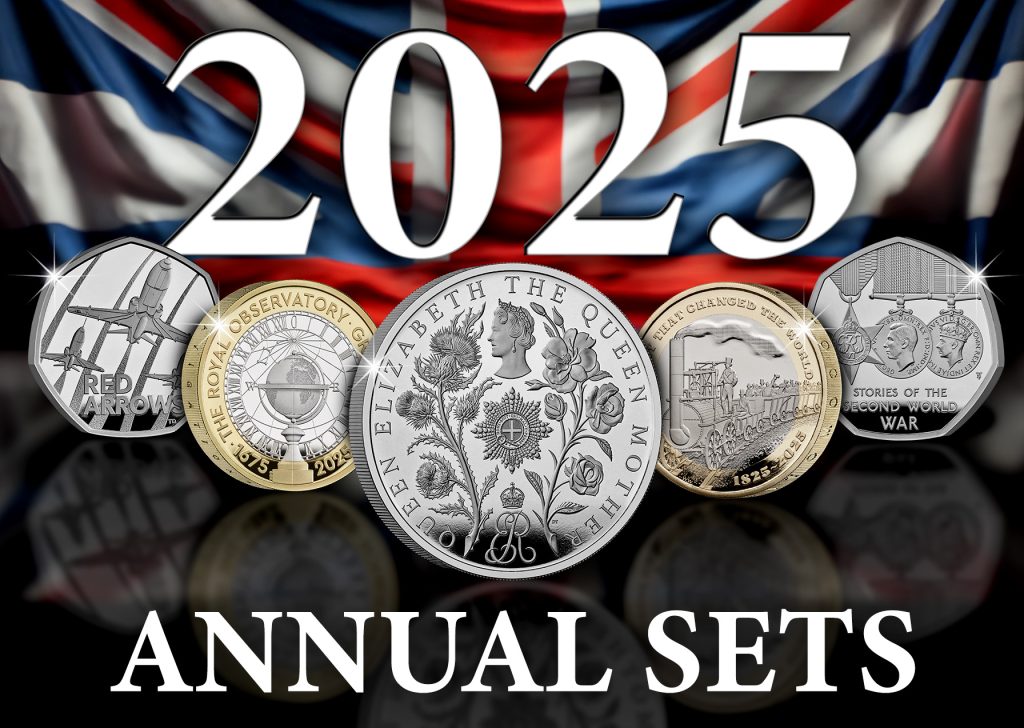
Available on 2nd January 2025
Here’s a closer look at the stories behind these commemorative coins:
Marking the Birth of Queen Elizabeth The Queen Mother

Queen Elizabeth The Queen Mother is celebrated for her steadfast resilience and unwavering support during some of the most challenging times in British history, including the Second World War. As a pillar of strength to her husband, George VI, and her daughter, Queen Elizabeth II, her influence spanned over a century. The £5 coin dedicated to her features a reverse design with a portrait that previously graced the coin celebrating her 80th birthday in 1980—a timeless tribute to her enduring legacy.
200 Years of the Modern Railway
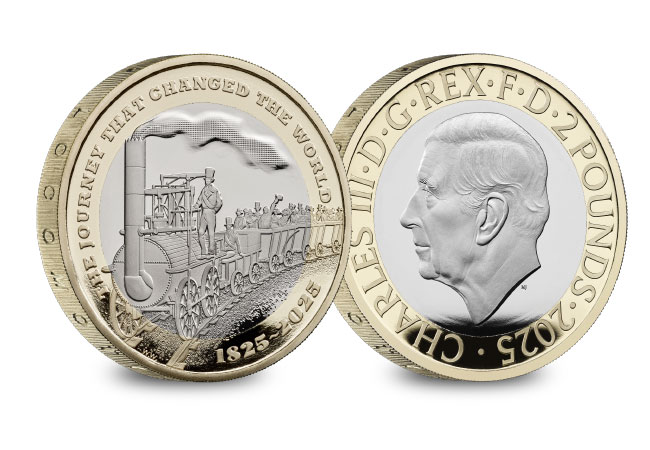
On 27 September 1825, George Stephenson’s Locomotion No. 1 revolutionised travel by transporting hundreds of passengers between Shildon, Darlington, and Stockton. This historic journey not only marked the dawn of the railway age but also transformed industries and cultures worldwide. The £2 coin commemorating this milestone captures the essence of that pivotal moment with a reverse design depicting Locomotion No. 1, paired with the edge inscription, “ACTIVE · LOCOMOTION NO 1.” This coin serves as a tribute to two centuries of innovation and progress in rail travel.
350 Years of The Royal Observatory, Greenwich
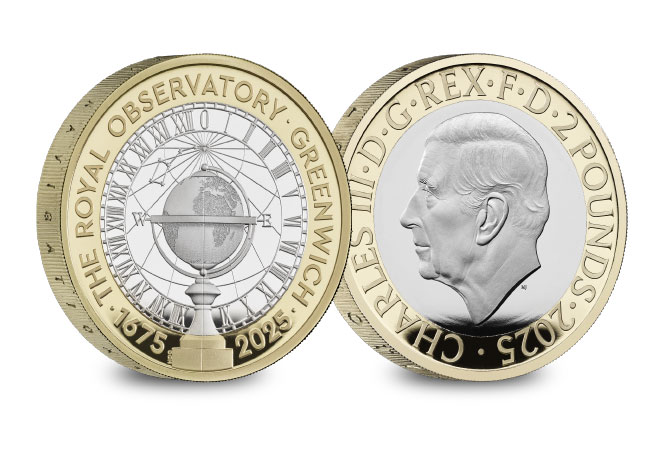
Founded in 1675 by Charles II, the Royal Observatory, Greenwich, has been a beacon of scientific progress, defining global navigation and timekeeping. The £2 coin commemorates its 350th anniversary with a reverse design that integrates the Shepherd Gate Clock, the constellation Ursa Minor, Polaris, and the iconic meridian line against a globe backdrop. Its edge inscription, “PERFECTING THE ART OF NAVIGATION,” underscores the Observatory’s enduring legacy.
Celebrating the Red Arrows
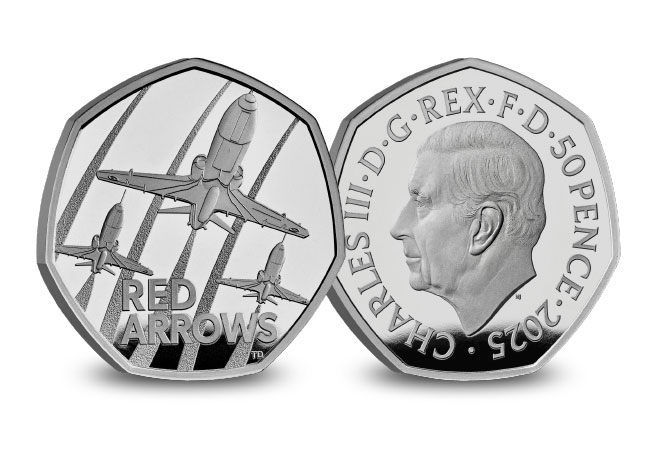
Since their inception in 1964, the Red Arrows have dazzled millions with their breath-taking aerobatic displays. Representing the precision and agility of the Royal Air Force, the team has performed nearly 5,000 displays across 57 countries. The 50p coin celebrating the Red Arrows features the sleek Hawk T1 aircraft, a tribute to the team’s inspiring legacy and their continued excellence in aviation.
Remembering the Stories of the Second World War
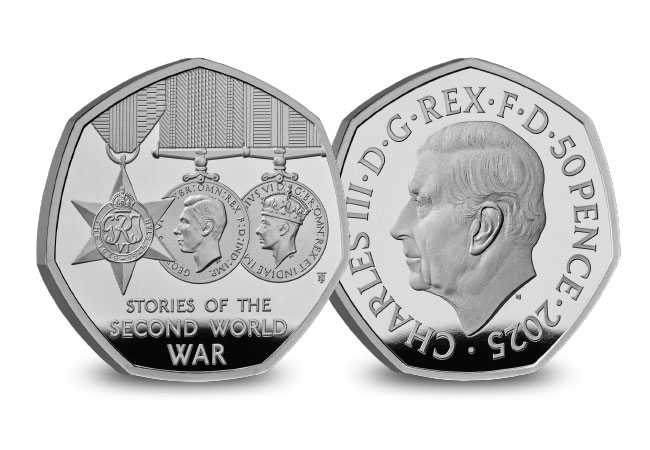
The Second World War was a defining chapter in British history, with contributions from soldiers, factory workers, and citizens alike. The 50p coin honours this collective effort with a reverse design showcasing the 1939–45 Star, Defence Medal, and War Medal—symbols of the bravery and resilience demonstrated during the war. Each medal tells a story of personal sacrifice and national unity that shaped the Britain we know today.
The Obverse: His Majesty King Charles III
Every coin in the 2025 Annual Sets bears the official coinage portrait of His Majesty King Charles III. Designed by Martin Jennings in 2022, this is the first definitive coinage portrait of
His Majesty The King to appear on coins, symbolising the continuity of the monarchy and the evolving story of the United Kingdom.
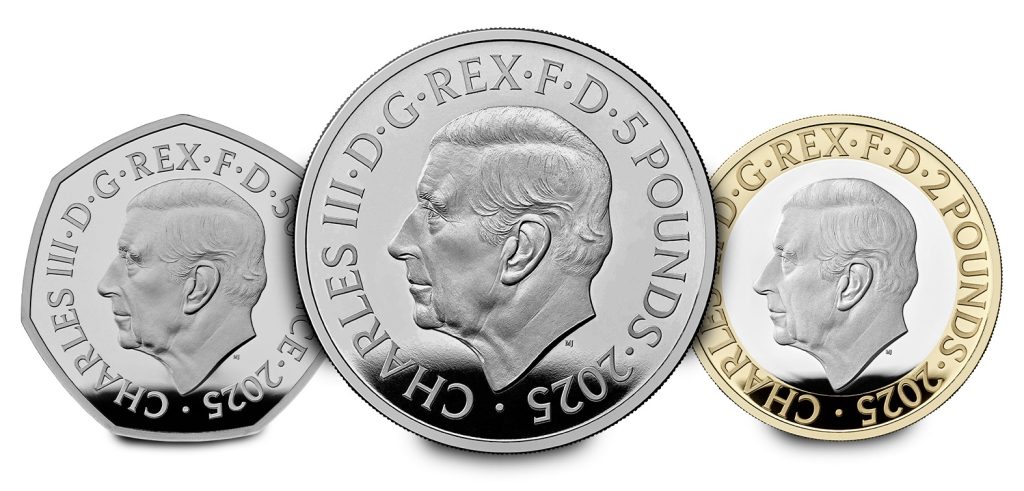
A Testament to British History and Craftsmanship
Each coin is meticulously crafted, embodying The Royal Mint’s dedication to excellence and storytelling. These sets not only celebrate the past but also inspire future generations to cherish and learn from Britain’s rich cultural heritage.
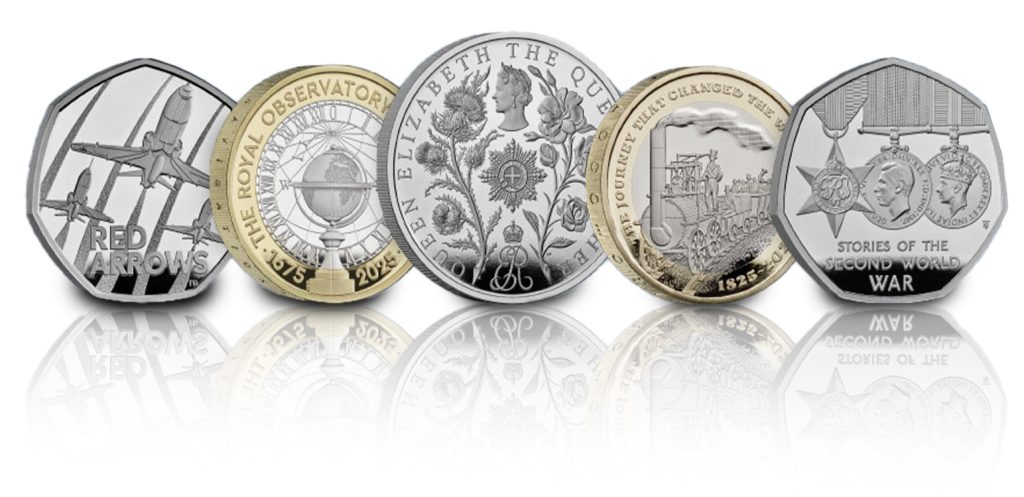
Available on 2nd January 2025
As stated by the Royal Mint
Honouring Dorothy Wilding: The Visionary Behind Queen Elizabeth II’s Iconic Portraits
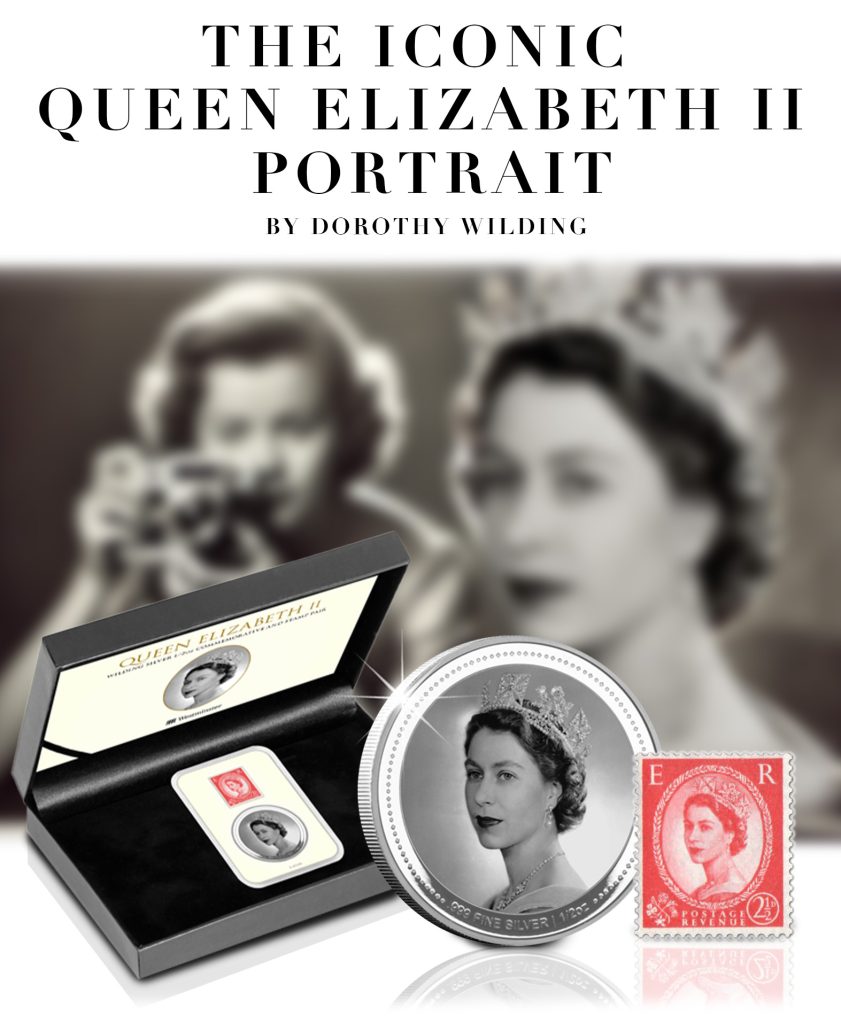

Dorothy Wilding, a name synonymous with timeless elegance and photographic mastery, played a significant role in shaping the image of one of the world’s most recognised monarchs: Queen Elizabeth II. Known for her simple yet striking photographic style, Wilding’s portraits of the Queen became the foundation for a new era of royal imagery.
In early 1952, just twenty days after Queen Elizabeth II’s accession to the throne, Wilding was granted the honour of conducting the first official photographic sitting. The Queen’s new role demanded an image that would grace coins, banknotes, and stamps, becoming a lasting symbol of her reign. Wilding, already experienced as a royal photographer, had previously captured official portraits at King George VI’s Coronation in 1937 and had been awarded the first Royal Warrant for a female photographer in 1943.
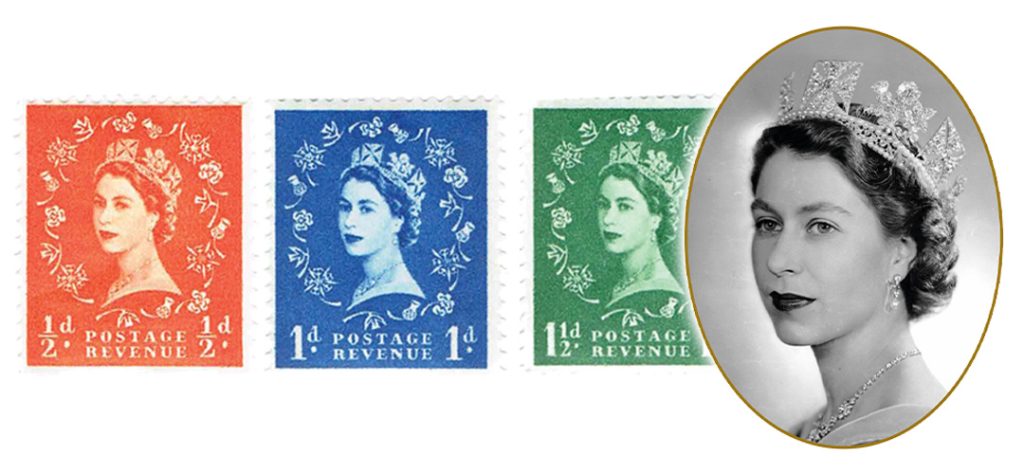
On February 26, 1952, Wilding photographed the young Queen wearing magnificent Norman Hartnell gowns and royal jewelry, such as the Diamond Diadem and the Girls of Great Britain and Ireland tiara. With an elegant simplicity, she utilized plain black and white backdrops, drawing all attention to the poise and grace of her subject. Out of the fifty-nine images taken during that session, one particular portrait became an icon. This three-quarter bust image of the Queen was selected for the 2½ pence stamp, released for the 1953 Coronation. The first stamp to depict Elizabeth II featured this portrait, and these stamps became commonly known as “Wildings.” The Queen’s head is turned slightly towards the viewer in a three-quarter profile, adding to the elegance of Wilding’s work.
For the ½d, 1d, 1½d, and 2d value stamps, the portrait was adorned with a decorative floral design created by Enid Marx. When we say a stamp has a value in “d,” this means its value in pennies. For example The notation “1½d” refers to one and a half (1.5) old pence. The “d” stands for “denarius,” a term used in pre-decimal British currency to denote pennies. Before 1971, the UK used pounds, shillings, and pence, with 12 pennies to the shilling and 20 shillings to the pound, totaling 240 pence in each pound. The currency change in the 1970s, known as decimalisation, significantly impacted stamps.
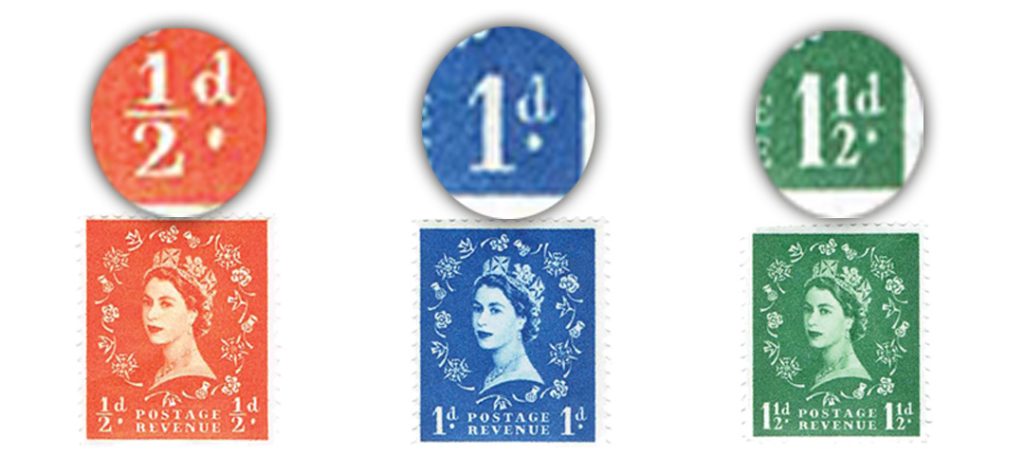
The stamps featuring this iconic portrait remained in circulation until 1971, and the photograph itself was hung in British Embassies around the world. Wilding’s work not only captured the Queen’s regal aura but also set a precedent for how the monarchy was represented on currency and official memorabilia. Her artistry continues to be celebrated and remembered as a key component of Britain’s visual heritage.
Introducing the Dorothy Wilding Silver Commemorative and Postage Stamp Set
To honour the legacy of Dorothy Wilding and her contribution to royal history, we are excited to present the First Dorothy Wilding Silver Commemorative and original postage stamp set. This exclusive offering celebrates the artistry of Wilding and the iconic image of Queen Elizabeth II that shaped an era.
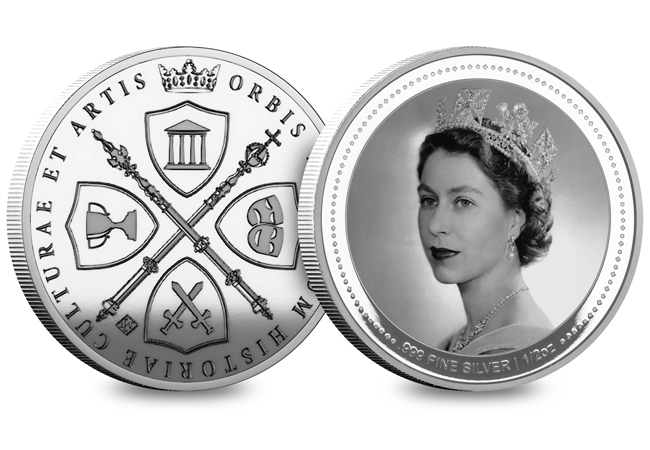
This set features a beautifully designed half-ounce pure silver commemorative, adorned with an officially licensed portrait of Queen Elizabeth II by Dorothy Wilding. The striking image is courtesy of the National Portrait Gallery, London, and reflects the timeless elegance that made Wilding’s photographs so celebrated. The commemorative captures the Queen’s grace and the iconic simplicity of Wilding’s style, making it a collector’s treasure.
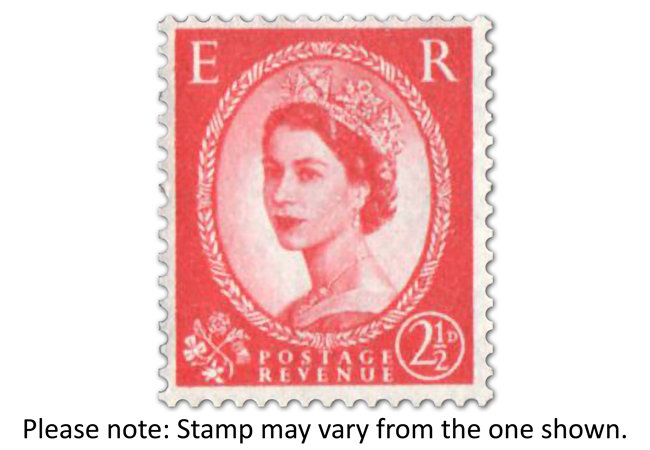
Accompanying the commemorative is an authentic Dorothy Wilding postage stamp, carefully selected from the 1952–1968 period. These stamps, available in vibrant colours and various denominations, offer a glimpse into the era when Wilding’s portraits of the Queen became a part of everyday British life.

But a limited quantity of just 250 sets being released this year, you will need to be quick to secure yours before they are all gone.
This exclusive collectible not only commemorates the artistry of Wilding but also celebrates the enduring legacy of Queen Elizabeth II. Each set includes a Certificate of Authenticity, affirming its place in history and the prestige of owning such a meaningful piece of royal heritage.
The Memories of Her Majesty at Christmas Collection

Christmas has always been a time for reflection, family, and cherished traditions. For Queen Elizabeth II, it was no different. Her life, entwined with this festive season, was marked by poignant moments that captured the essence of her reign and personal warmth. This year, as we celebrate her memory, we invite you to journey through these moments with our exclusive commemorative collection that captures five special Christmas memories from Her Majesty’s life.

A Young Princess Singing Carols with Her Sister

Long before her ascension to the throne, the young Princess Elizabeth shared precious Christmas moments with her sister, Princess Margaret. The image of the two young royals singing carols together evokes the innocence and joy of childhood during the festive season. This commemorative celebrates the timeless tradition of Christmas carols and the joyful spirit of youth.
The Queen’s Speech

In 1952, Queen Elizabeth II delivered her very first Christmas speech over the radio. A solemn yet hopeful message, she marked the beginning of what would become a beloved tradition for generations. This commemorative celebrates that historic moment, reminding us of her unwavering dedication and connection with the nation, even at such an early stage in her reign.
Family at Windsor Castle

The late 1960s saw the Queen spending Christmas with her family at Windsor Castle. These were times of warmth, laughter, and the simple pleasures of togetherness. Our commemorative captures the joy of these festive family gatherings, symbolising the importance of unity and the deep family bonds the Queen cherished.
Visiting the Church of St Mary Magdalene

One of the Queen’s most cherished Christmas traditions was attending the service at the Church of St Mary Magdalene on the Sandringham Estate. Surrounded by family and well-wishers, these visits became a hallmark of her reign during the festive season. This commemorative captures these precious moments from the 1990s, symbolising her devotion and the enduring connection she shared with the community.
Riding in the Snow at Sandringham

An avid equestrian, Queen Elizabeth II often embraced the wintry landscapes of Sandringham. The image of her riding through the snow exemplifies her love for nature and tradition. This commemorative pays tribute to her resilient, adventurous spirit and her love for horses, showing a side of the Queen that many have admired over the years.
A Collection to Treasure This Christmas
As we remember these cherished moments, we invite you to honour Queen Elizabeth II’s legacy with this exclusive collection. Each piece tells a story of Christmases past, capturing the spirit of Her Majesty’s life and reign during this special time of year.

This Christmas, let her memory warm your hearts and inspire you to cherish your own festive moments with loved ones. Visit our website today to explore the collection and keep the Queen’s spirit alive in your home this holiday season.

